Designs for Entryway Containers
You only get one chance to make a first impression, so put your best pots forward

You can’t take back a first impression, and the entryway is the first glimpse a visitor has of your home. Container gardens, when used properly, are an easy way to enhance this area and leave a lasting impression on your guests. Front entrances often get the most priority, but don’t neglect entries to important parts of the garden as well as secondary entryways that you and your family use on a regular basis.
Look at entryway containers like billboards promoting the coming attractions found within: a glimpse into the inner sanctum you call home. Know what you want your containers to say, and keep that in mind while you’re designing them. Also, concentrate on following basic design principles for these front-and-center containers.
Front entries require special attention to the scale and style of your home, the distance from which the containers are first seen, and the scale of the neighborhood. Generally, this means big containers, bold brushstrokes with pronounced focal points, and a clear contrast between ingredients to command attention even from a distance. The details are still important, though. Keep in mind that your containers are designed not only for the up-close views of you and your guests but also for passersby, like drivers and pedestrians. You did the work. Why not show it off?
A single color theme makes an impact
- Golden Italian cypress (Cupressus sempervirens ‘Swane’s Gold’, USDA Hardiness Zones 7–9)
- ‘Mystic Illusion’ dahlia (Dahlia ‘Mystic Illusion’, Zones 9–11)
- Festival Grass™ cordyline (Cordyline ‘Jurred’, Zones 9–11)
- Purple heart (Tradescantia pallida ‘Purpurea’, Zones 8–11)
- Dinosaur kale (Brassica oleracea ‘Nero di Toscana’, annual)
Conditions: Full sun
Maybe yellow isn’t the most popular color in the rainbow, but I love how it begs to be seen. Here, it saturates this entry container, starting with the pot and moving up from there. The flowers of ‘Mystic Illusion’ dahlia float above the dark foliage, breaking up the solid yellow of the golden Italian cypress topiary and the pot below. The color choice also picks up the tones and shades of yellow in the garden and house, uniting the two. When Jack Frost makes his debut come fall, the cypress will continue on into winter with a new round of companions to share its beautiful yellow home.
A simple container trick allows for an unusual pair
- Pencil cactus (Euphorbia tirucalli, Zones 9–11)
- Artichoke agave (Agave parryi var. truncata, Zones 6–9)
- Golden Scotch moss (Sagina subulata ‘Aurea’, Zones 4–7)
Conditions: Full sun
Interesting pot shapes and simple but bold plant choices are the basis for the containers at this modern entry. The warm colors of the ceramic pots add warmth to the concrete setting while complementing the cooler greens of the plants themselves. The unlikely pairing of moisture-loving golden Scotch moss with drought-tolerant agave in the lower pot is made possible by planting the agave pot within the pot of moss. It’s tricky but it works. When watering, the home owner hand-waters the moss, while skipping over the agave and pencil cactus.
Narrow spaces need containers too
- King Tut® papyrus (Cyperus papyrus King Tut®, Zones 10–11)
- Tropicanna® Gold canna (Canna indica ‘Mactro’, Zones 8–11)
- ‘Mystic Dreamer’ dahlia (Dahlia ‘Mystic Dreamer’, Zones 9–11)
- ‘Sedona’ coleus (Solenostemon scutellarioides ‘Sedona’, Zone 11)
- Purple heart (Tradescantia pallida ‘Purpurea’, Zones 8–11)
- Superbells® Apricot Punch calibrachoa (Calibrachoa ‘USCALI413–8’, annual)
- Variegated potato vine (Solanum jasminoides ‘Variegata’, Zones 9–11)
Conditions: Full sun
These tall, slim planters are ideally suited to this relatively narrow space as they allow for a big display without taking up a lot of real estate. The height frames the entry nicely, while the wood-toned pots complement the double doors. Colorful flowers and foliage bring viewers to the show, while playful King Tut® papyrus loosens things up a bit. Although balanced and symmetrical, the pots and their contents offer an informal, tropical feel—exactly the intent of the home owners.
Add drama by echoing the color of your house
- Creeping wire vine (Muehlenbeckia axillaris, Zones 8–10)
- Golden dwarf sweet flag (Acorus gramineus ‘Ogon’, Zones 6–9)
- Silhouette® Double Orange impatiens (Impatiens walleriana Silhouette® Double Orange, annual)
- African mask (Alocasia × amazonica, Zones 10–11)
Conditions: Partial shade
This duo fits into its surroundings with finesse by mimicking the house’s color palette and by having supporting elements that back up the dramatic container ingredients. African mask’s heavy, textural foliage and the red bamboo’s strong vertical line get attention even from a distance, while Silhouette® Double Orange impatiens distribute the color saturation of the bamboo. Creeping wire vine and the sweet flag soften the edge of the ceramic pots while highlighting the venation of the African mask. Both are cold tolerant and will last well beyond the first frost, while the bamboo, stained with a red-toned wood stain, will provide four seasons of interest.
Large entrances call for more containers
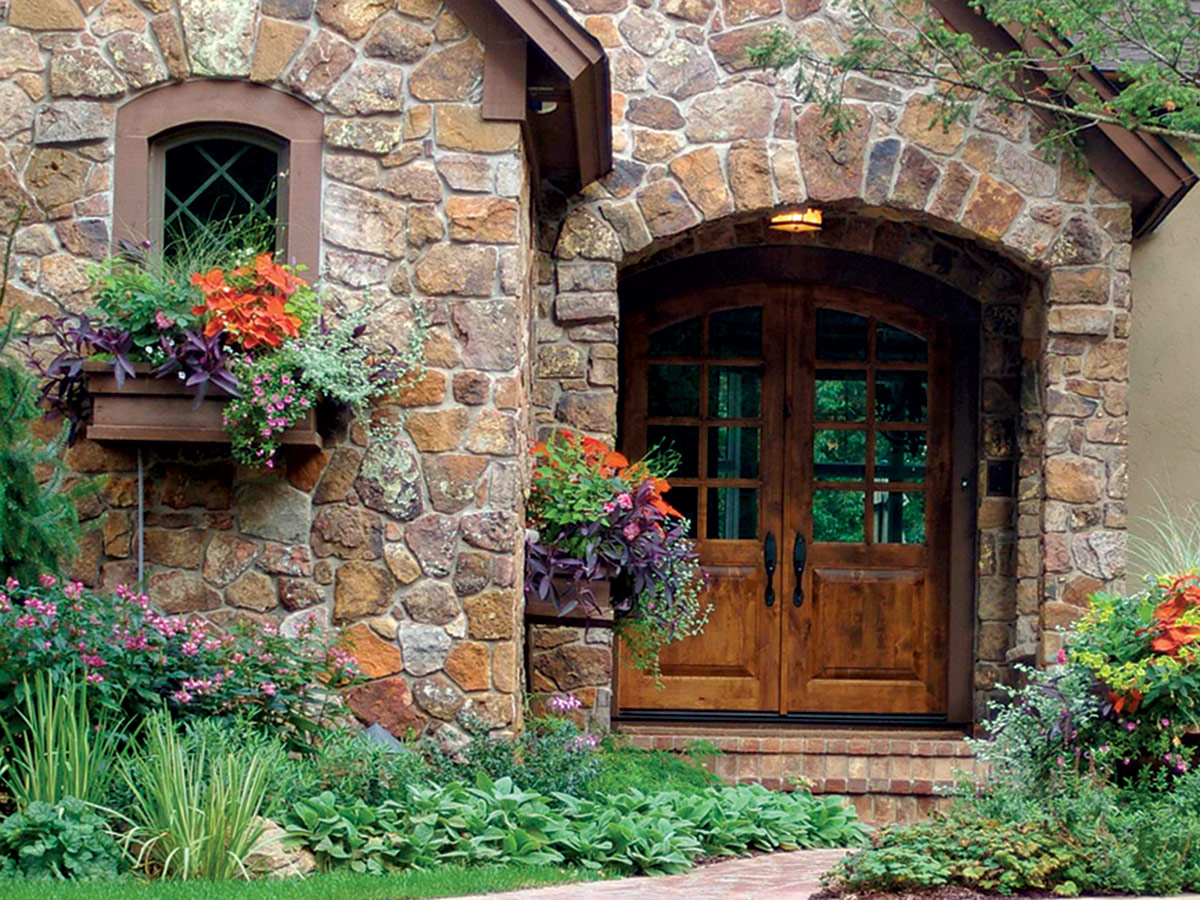
- Purple heart (Tradescantia pallida ‘Purpurea’, Zones 8–11)
- Gallery® Rembrandt dahlia (Dahlia Gallery® Rembrandt, Zones 9–11)
- Callie® Coral Pink calibrachoa (Calibrachoa Callie® Coral Pink, annual)
- ‘Silver Mist’ helichrysum (Helichrysum microphyllum ‘Silver Mist’, Zone 11)
- ‘Sedona’ coleus (Solenostemon scutellarioides ‘Sedona’, Zone 11)
- ‘Golden Jubilee’ anise hyssop (Agastache foeniculum ‘Golden Jubilee’, Zones 4–11)
- ‘Morning Light’ miscanthus (Miscanthus sinensis* ‘Morning Light’, Zones 4–9)
Conditions: Full sun
Large entrances need either large containers or more of them to create the desired impact from the street, as demonstrated by this plus-size suburban home. Appropriately scaled window boxes and a large entry urn frame the door in a less-than-traditional way. Too often we think we need two identical planters on each side of the doorway to accomplish a successful entry planting. Planters can be single, clustered, freestanding, or, in this case, attached to the house as window boxes to complement an entry. These plantings are detailed enough to be fawned over up close but dramatic enough to hold their own from a distance.
Containers don’t have to hog the path
- Golden Italian cypress (Cupressus sempervirens ‘Swane’s Gold’, Zones 7–9)
- Bauer’s dracaena (Cordyline baueri, Zones 9–11)
- ‘Gartenmeister Bonstedt’ fuchsia (Fuchsia ‘Gartenmeister Bonstedt’, Zones 9–10)
- Lanai® Peach verbena (Verbena Lanai® Peach, annual)
- Chenille plant (Acalypha hispida, Zone 11)
- Dusty miller (Centaurea cineraria, Zones 7–11)
- Bonfire® begonia (Begonia boliviensis Bonfire®, Zones 10–11)
Conditions: Full sun
A pair of symmetrical containers framing an entry often suggests a sense of formality, as they do in front of this home. The large ceramic jars are arranged with plant choices that complement the architecture and colors of the home. Warm orange tints and tones are a constant throughout. ‘Sedona’ coleus, planted in the adjacent garden, ties in to this scheme. Golden Italian cypress and dusty miller add a natural brightness to the combination. Besides framing the entry, the jars are an integral part of the garden. The gardener chooses to emphasize this point by placing them in the garden beds rather than on the pavers of the walkway. The container plantings are further enhanced with built-in porch boxes overflowing with coleus and Bonfire® begonia.
Give your rear entryways some foliage power
- Creeping wire vine (Muehlenbeckia axillaris, Zones 8–10)
- Silver sage (Salvia argentea, Zones 5–8)
- ‘Elijah Blue’ blue fescue (Festuca glauca ‘Elijah Blue’, Zones 4–8)
- Red chicken gizzard iresine (Iresine herbstii, annual)
- Persian shield (Strobilanthes dyerianus, Zones 9–11)
- ‘Saturn’ coleus (Solenostemon scutellarioides ‘Saturn’, Zone 11)
- ‘Crystal Palace Gem’ geranium (Pelargonium ‘Crystal Palace Gem’, annual)
- Variegated Saint Augustine grass (Stenotaphrum secundatum ‘Variegatum’, Zones 9–11)
- Pencil cactus (Euphorbia tirucalli, Zones 9–11)
Conditions: Full sun
Flowers take a backseat to a plethora of interesting foliage textures, shapes, and colors at this rear entryway. These containers offer guests a final glimpse of the intensely planted back garden of the home. Favorite foliage plants constitute the list of players, including silver sage, blue fescue, and red chicken gizzard iresine, to name just a few. The odd-looking pencil cactus will spend the winter inside, looking forward to a new set of neighbors for next summer’s vacation in the sun.
Color adds the bling
- ‘Wyoming’ canna (Canna ‘Wyoming’, Zones 8–11)
- ‘Solar Flair’ coleus (Solenostemon scutellarioides ‘Solar Flair’, Zone 11)
- ‘Gartenmeister Bonstedt’ fuchsia (Fuchsia ‘Gartenmeister Bonstedt’, Zones 9–10)
- Tropicanna® canna (Canna indica ‘Phasion’, Zones 8–11)
Conditions: Full sun to partial shade
In this landscape, two pots add much-needed warmth and welcome to the front entry. The punchy color scheme stands out from the more muted palette of the foundation plantings. Just as jewelry accessorizes a dress, this grouping adds energy to the earth-toned house, revealing a glimpse of the gardener’s personality and adding a bit of bling to the entryway.
Simple, stylish pots create an elegant feel

- ‘Aureola’ Japanese forest grass (Hakonechloa macra ‘Aureola’, Zones 5–9)
- Blue echeveria (Echeveria secunda var. glauca, Zones 9–11)
- African mask (Alocasia × amazonica, Zones 10–11)
- Bellfire® begonia (Begonia boliviensis Bellfire®, Zones 10–11)
- King Tut® papyrus (Cyperus papyrus King Tut®, Zones 10–11)
Conditions: Partial shade
A trio of entry pots adds contemporary sophistication to this modern home. The three pots also visually balance the weight of the blue door. Lead-colored iron pots, blue echeveria, and African mask play up the door’s color, while the Japanese forest grass and King Tut® papyrus brighten things up a bit. The stylish group of plants is foliage focused, with the exception of the Bellfire® begonias, which add a warm red accent to the scene. The grouping is further enhanced by a backdrop of modern trellises, which provide additional height without pulling away from the already-winning combinations below. The perennial Japanese forest grass can be tucked into the garden at the end of the season.
Repeating plants creates consistent harmony
- Red alternanthera (Alternanthera dentata cv., Zone 11)
- Lemon Swirl® lantana (Lantana camara* ‘Variegata’, Zone 11)
- Red chicken gizzard iresine (Iresine herbstii, annual)
- ‘Vancouver Centennial’ geranium (Pelargonium ‘Vancouver Centennial’, Zone 11)
- Creeping wire vine (Muehlenbeckia axillaris, Zones 8–10)
- Variegated ground ivy (Glechoma hederacea* ‘Variegata’, Zones 4–9)
- Napoleon™ papyrus (Cyperus papyrus Napoleon™, Zones 10–11)
- ‘Freckles’ coleus (Solenostemon scutellarioides ‘Freckles’, Zone 11)
- ‘Tangletown’s Dark Secret’ coleus (Solenostemon scutellarioides ‘Tangletown’s Dark Secret’, Zone 11)
Conditions: Full sun
These containers work together effectively through repetition. By repeating plants, pots, and colors, the designer has the option to mix things up a little, knowing that there is a solid framework to rely on. Here, a common green container color echoes throughout the group. Further repetition occurs with the reappearance of similar plants and color patterns.
Fill your entry with greenery in every season
- Ornamental kale (Brassica oleracea cv., annual)
- ‘Aureola’ Japanese forest grass (Hakonechloa macra ‘Aureola’, Zones 5–9)
- ‘Redbor’ ornamental kale (Brassica oleracea ‘Redbor’, annual)
- Cranberry cotoneaster (Cotoneaster apiculatus, Zones 5–7)
- ‘Swinging Linda’ coleus (Solenostemon scutellarioides ‘Swinging Linda’, Zone 11)
- ‘Chilly Chili’ ornamental pepper (Capsicum annuum ‘Chilly Chili’, annual)
- Tropicanna® Gold canna (Canna indica ‘Mactro’, Zones 8–11)
- Tiger Eyes™ sumac (Rhus typhina ‘Bailtiger’, Zones 4–8)
Conditions: Full sun to partial shade
This designer uses his less formal back door to showcase his favorite garden plants. These plants, like furniture, are rearranged regularly to highlight certain players at different times of the season. This photo, taken in early fall, features favorite plants from summer while showcasing seasonal beauties, such as cranberry cotoneaster, ornamental kales, ornamental pepper, and Tiger Eyes™ sumac, that will take the lead once the cold sets in.
*These plants are considered invasive in some areas of the country. Please visit invasiveplantatlas.org for more information.
—Scott Endres owns Tangletown Gardens in Minneapolis.
Photos, except where noted: Brandi Spade
Fine Gardening Recommended Products
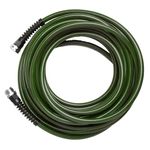
Water Right PSH-100-MG-1PKRS 400 Series, 100-Foot, Olive Green
Fine Gardening receives a commission for items purchased through links on this site, including Amazon Associates and other affiliate advertising programs.
- 3 Pounds
- 1200"L x 0.43"W
- Manufactured in the USA
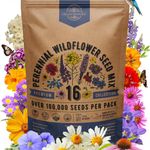
Organo Republic 16 Perennial Wildflower Seeds Mix for Indoor & Outdoors
Fine Gardening receives a commission for items purchased through links on this site, including Amazon Associates and other affiliate advertising programs.

Ho-Mi Digger - Korean Triangle Blade
Fine Gardening receives a commission for items purchased through links on this site, including Amazon Associates and other affiliate advertising programs.



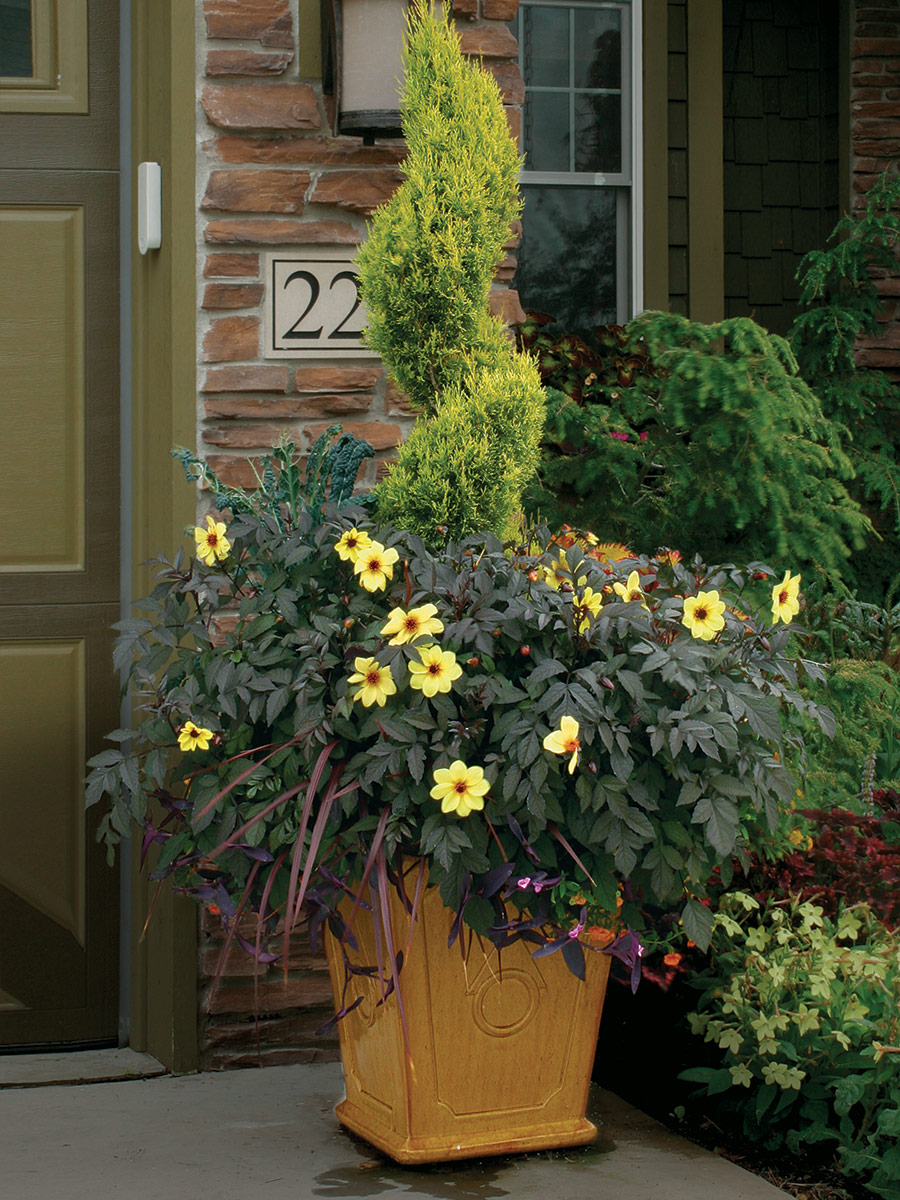










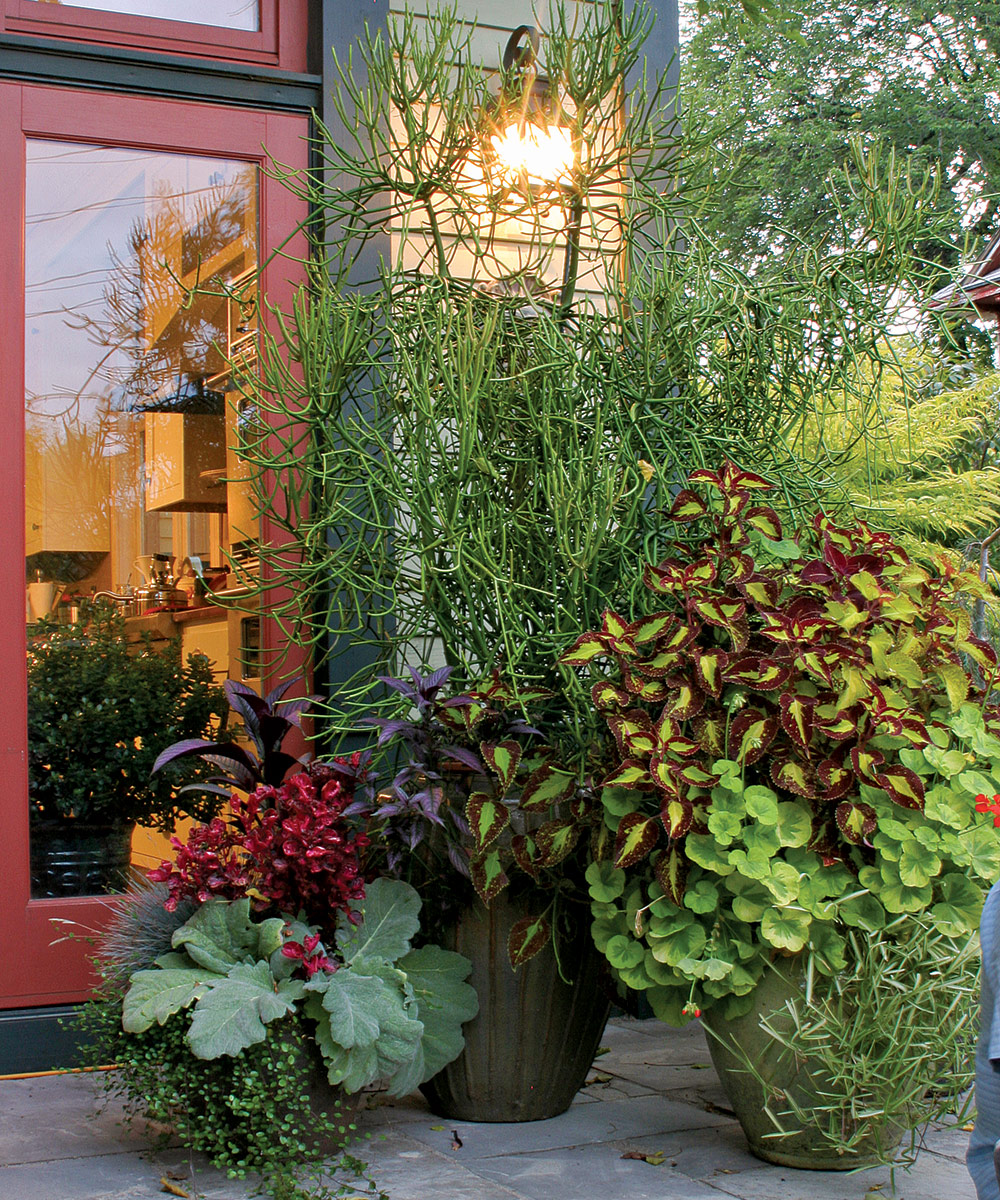
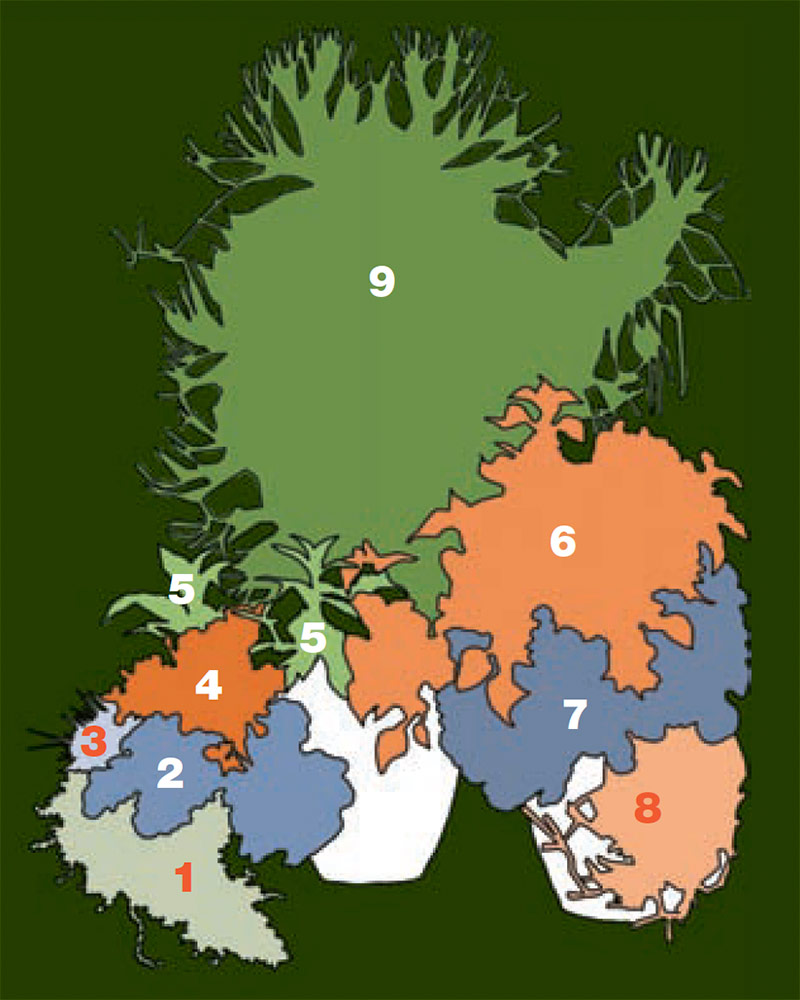











Comments
Log in or create an account to post a comment.
Sign up Log in